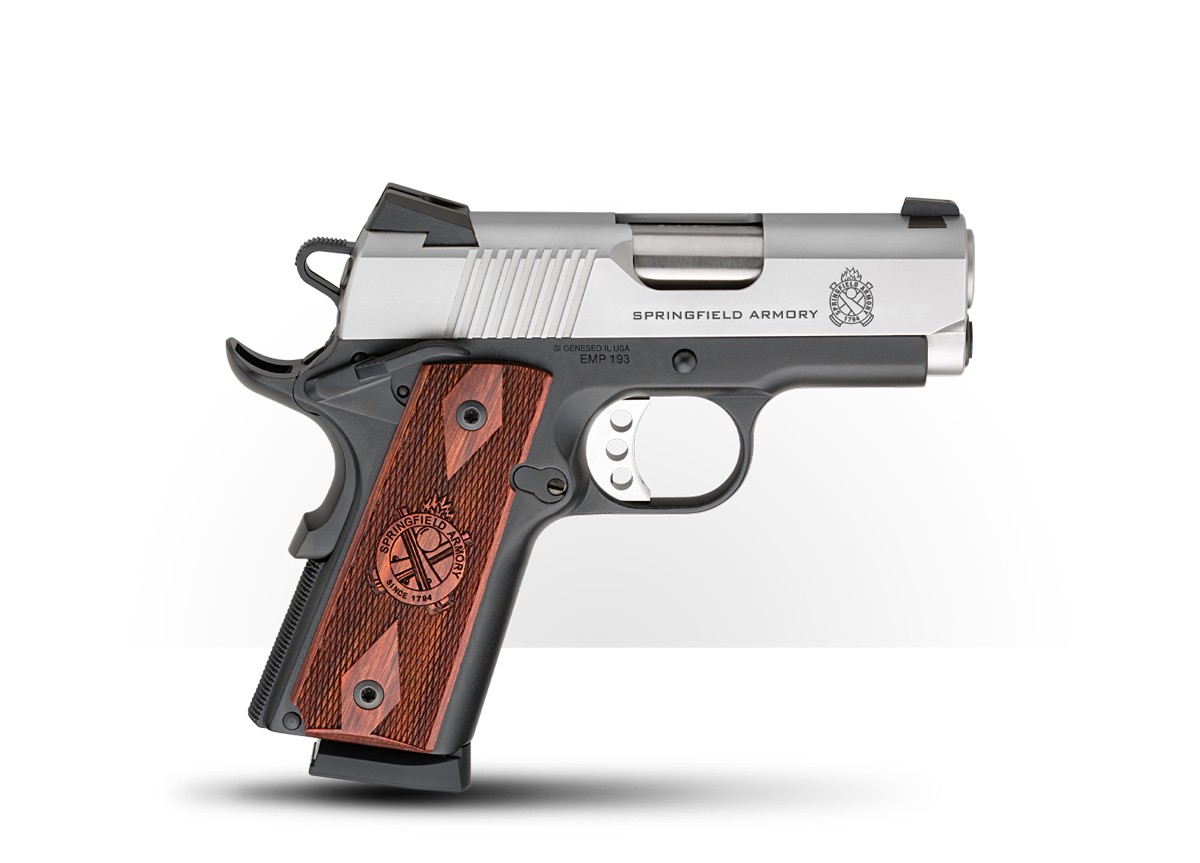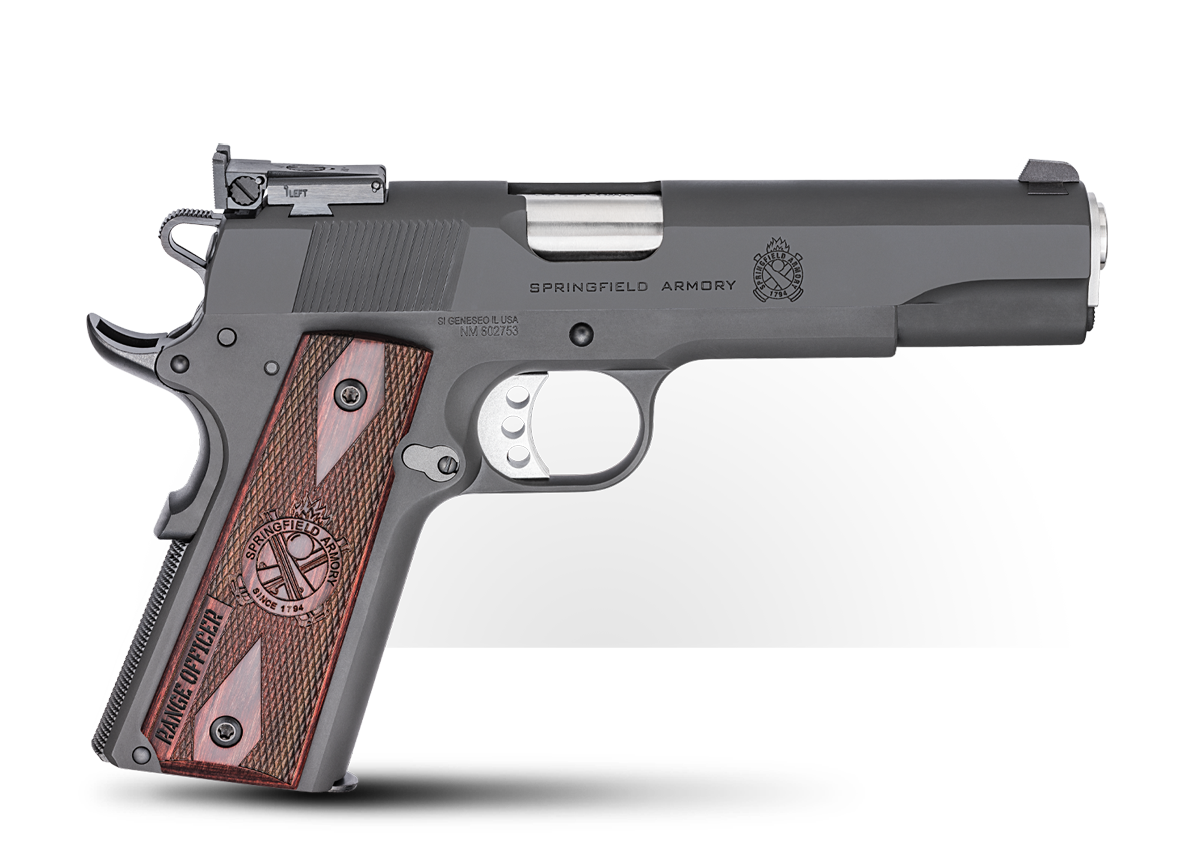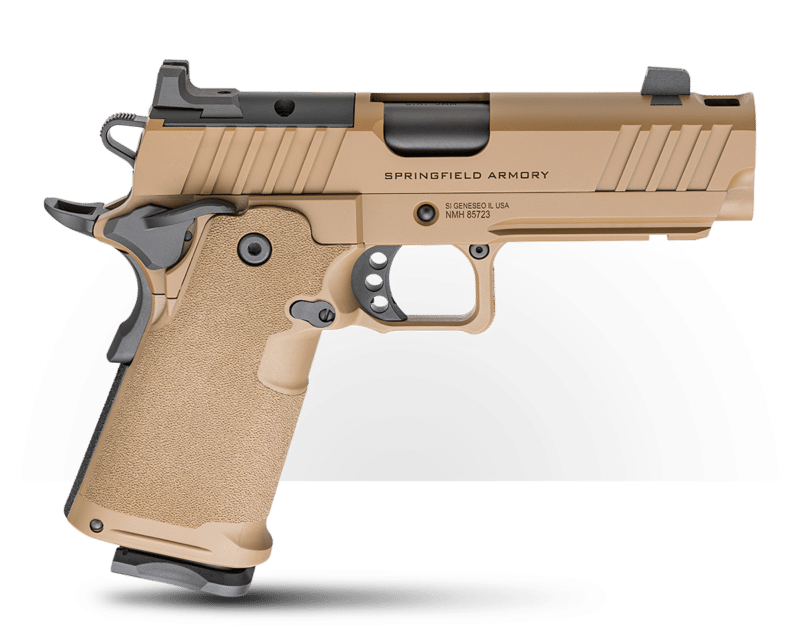Taffin Tests Springfield 1911s
January 12th, 2020
8 minute read
The modern version of Springfield Armory is known for offering reasonably priced, exceptional quality 1911s, and I’ve been a fan for more than 20 years. In the early 1990s, I spent several 115-degree days shooting with Springfield’s Robbie Leatham outside Phoenix, Arizona. Then in the following fall, I experienced the opposite with extreme cold weather and biting wind, while shooting again with Robbie at a Springfield Armory Seminar in Mississippi.
One of my favorite 1911 pistols is the Springfield Armory Mil-Spec chambered in .38 Super. This is a no-frills pistol with no extra doodads and fixed, military-style sights. It was purchased with the thought that if it shot well enough, to turn it into a .38 Super Field Pistol, as I read about as a teenager in one of Jeff Cooper’s early books. My plan was to switch out the sights, add an extended thumb safety and perform a trigger job, if it shot well enough.
Actually, it shot too well. It shoots good and to point of aim, the trigger is more than satisfactory, and the sights are big, black and square enough for me to see them easily, so I have just left it alone apart from for custom grip panels. It does everything I need, just the way it is. In fact, it’s so satisfactory I ordered a mate to it, another Mil-Spec in .45 ACP.
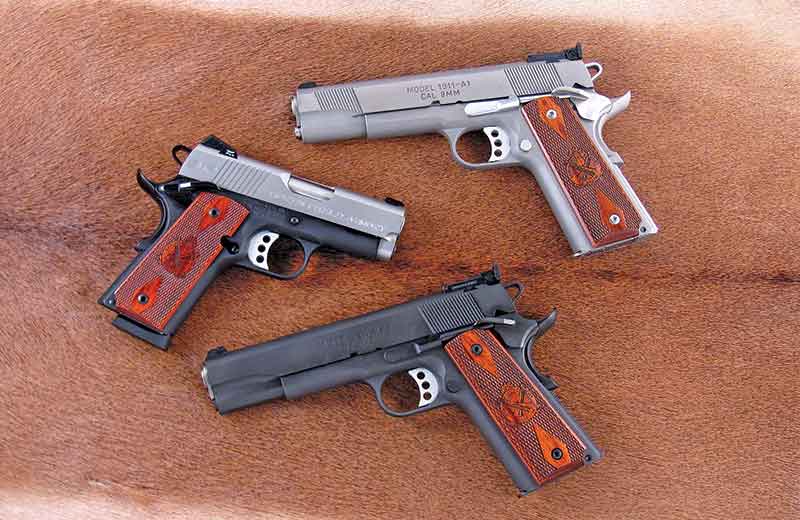
9mm 1911
Lately, I have been shooting and immensely enjoying a trio of Springfield Armory 1911s. Two of them are full-sized, target-sighted versions, while the third is a scaled down, part-by-part, miniature 1911. The first one came while I was recuperating from emergency surgery in fall of 2010, and after purchasing it I ordered the next two for more testing and evaluating.
It has long been my desire to have a full-sized 1911 chambered in 9mm. At one time I had a Colt Commander Nine, however I let that one get away and don’t believe I’ve ever seen a full-sized 1911 Government Model 9mm. I know originals are very pricey now. I can’t even come up with a good reason for wanting one, except I do and I think I’m at the age when I really don’t have to explain myself; at least not to myself. So, I wanted a full-sized 9mm, Springfield Armory offered me one, and that’s that. I now have a stainless steel 1911 9mm with fully adjustable target sights and in the 1911-A1 configuration.
This Springfield goes against the grain of current 9mms, in that it’s a single stack instead of being high capacity. On the other hand, if I were to design what I felt was the perfect 1911 9mm, I don’t see how I could come up with anything better than this version. This Target Model is stainless steel, sights are black the way they should be, consisting of a square-notch rear sight matched up with a sloping-post front sight. The front sight is set in a dovetail allowing for easy windage adjustment — or even replacement if desired. The rear sight is also in a dovetail, and set very low in the top of the slide, and is adjustable for both windage and elevation.
The stainless steel slide is polished bright on the sides with a glare-reducing matte finish on top. Slanted serrations on both sides behind the front sight and in front of the rear sight allow for easy operation of the slide, which is also aided by the fact it rides smoothly on the frame. The trigger is lightweight aluminum with three holes drilled in it and serrations on the front to prevent the trigger finger from slipping, and trips at a measured 5 1/2 pounds.
The hammer is also lightweight and skeletonized. The grip safety is a beavertail, cut out on top for the hammer, allowing it to ride as high as possible. The mainspring housing is an original 1911-straight-style and is checkered, while the frontstrap is smooth. With the relatively light recoil 9mm, the checkered backstrap combined with the checkered grips works just fine.
I tested the 9mm with 18 different types of ammunition from nine different manufacturers. The most accurate load, at 1″ for five shots fired at 20 yards proved to be an effective load for self-defense use, the Black Hills 115 JHP +P, which clocked out at over 1,300 fps from the 5″ barrel of the 1911-A1. Right behind this load was Buffalo Bore’s 115 JHP +P, also over 1,300 fps, with five shots going into 1 1/2″ at a distance of 20 yards. With its 41-ounce weight, Springfield Armory’s 1911-A1 9mm was exceptionally easy to handle and comfortable to shoot. This is certainly a pistol one could shoot all day in comfort, no matter which loads were selected.
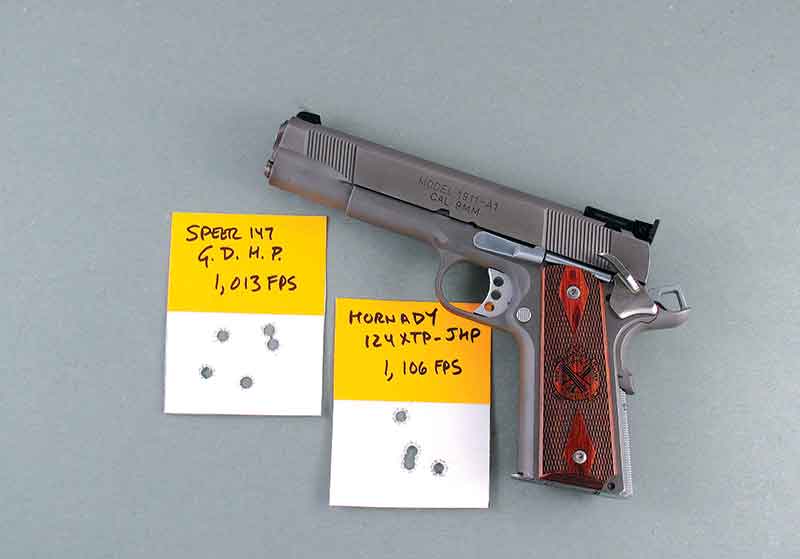
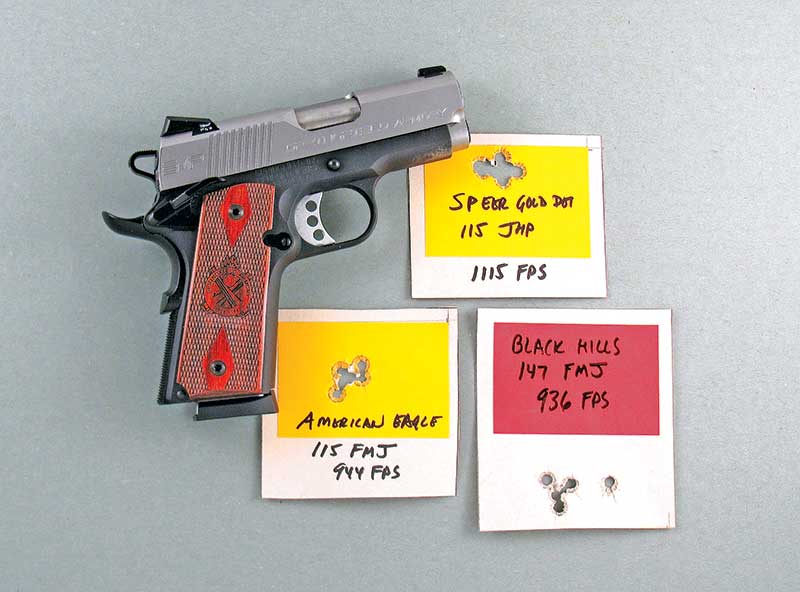
Range Officer
Next comes one of Springfield Armory’s latest 1911s, the Range Officer. This is also full-sized, however it’s chambered in .45 ACP. This one is quite similar to the 9mm version; in fact both are marked on the left side with “MODEL 1911-A1.” Sights, hammer, trigger, slide lock, and beavertail grip safety are all identical. While the 9mm has an ambidexterous safety, the .45 ACP version has one extended thumb safety on the left side.
Grips are also alike, constructed of what appears to be cocobolo with a double-diamond pattern and the Springfield Armory logo in the center. While the 1911-A1 9mm has cocking serrations both on the front and rear of the slide, the Range Officer has only the slanted serrations on the back part of the slide. The major difference in the two pistols, other than chambering, is the fact the Range Officer is blued steel with a matte black finish. Trigger pull on the .45 is a smooth, creep-free 5 3/4 pounds.
An extra added bonus with all Springfield Armory 1911 pistols is a hard plastic abbreviated holster, complete with a Picatinny rail built in to the front-leading edge for carrying a flashlight or laser light, and also a double-magazine pouch with the same rail on both sides — all very handy. Both holster and magazine pouch are also screw-adjustable for tension.
Springfield Armory advertises their new Range Officer as being suitable for competition without any unneeded extras. It certainly makes a fine self-defense pistol as it has the most desired attributes in upgrading a 1911, with excellent sights, extended thumb safety, and beavertail grip safety. The magazine release also works very easily and positively.
Shooting the Range Officer was pure pleasure. Fifteen different loads from six different manufacturers were tried with some outstanding results, including the Black Hills 230 grainers. Their standard 230-grain JHP clocked out at 770 fps and put five shots in 7/8″, while the FMJ version duplicated the muzzle velocity and cut the group size to 5/8″. What really intrigued me is the fact the Black Hills 230-grain, round-nosed lead rounds grouped at just over 1″. Winchesters were very consistent, with the 185-grain SilverTip, 230 JHP and 230 FMJ all grouping in 1 1/4″. This pistol is definitely a keeper.
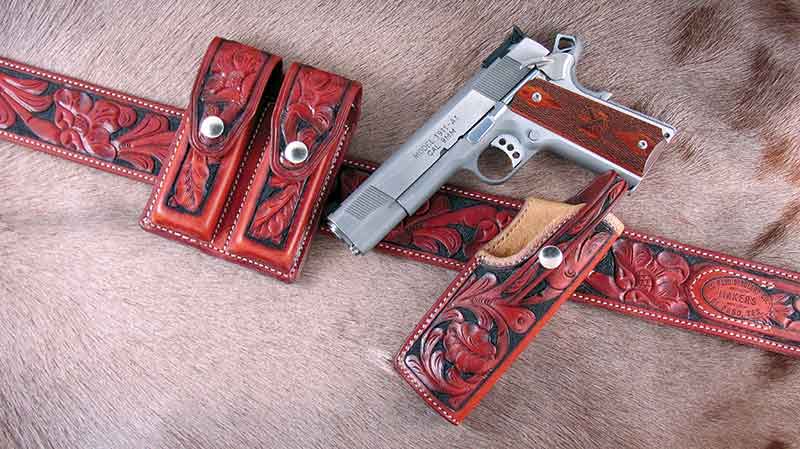
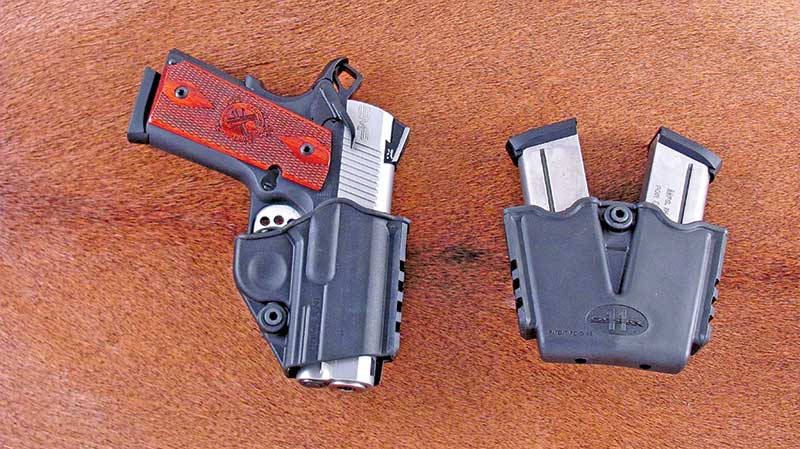
Enhanced Micro Pistol
Finally, we come to the EMP (Enhanced Micro Pistol). Available in both 9mm and .40, I went with the easier shooting 9mm. Over the years, several gunsmiths and manufacturers have chopped the 1911, making pocket-sized .45s. I have two such versions, and I often see complaints as to the unreliability of these, as they call them — aberrations. The complaint is simply that the cutting of existing 1911 parts to make a smaller gun results in malfunctioning. I don’t think it’s entirely true, as using the proper ammo and a stout grip and stance is critical with any of the smaller guns. I have no problems with mine, but treat them accordingly.
With the EMP, Springfield Armory took a totally different approach and actually downsized the entire 1911 by making smaller parts, not by cutting existing examples. The result is a smallish 1911, which is one of the neatest, slickest, fastest-handling, easy-shooting 9mms in existence.
The EMP features a 3″ stainless steel, match-grade, heavy bull barrel with a fully supported feed ramp. Sights are low profile, 3-dot tritium with a combat rear sight, all matched up with a slanted-post front sight, both of which are set in dovetails. If you grab the slide above the rear sight for cocking, there is no chance of injury due to any sharp edges on the rear sight. The trigger is long, of aluminum, match-grade quality and is set at 5 3/4 pounds. Three 9-round stainless steel magazines with bumper pads are supplied.
Safety features are an ambidextrous extended thumb safety matched up with a beavertail grip safety. The mainspring housing is of the straight variety, and checkered. Grips are the standard cocobolo diamond pattern. The entire pistol is quite attractive, with a satin finished stainless steel slide matched up with a black-anodized aluminum alloy frame. Although this is a very small pistol, the grip frame allows a full, secure grip with no fingers dangling on the bottom. Weight with an empty magazine is only 26 ounces, and this little pistol tucks easily into the waistband or the Springfield Armory supplied plastic holster.
I shot the Springfield Armory Enhanced Micro Pistol with a full dozen different 9mm loads from five different manufacturers. Since this is such a small pistol, all testing was done at 7 yards, with excellent results, including several loads coming in at 1″ or less for five shots. Felt recoil was relatively mild, even with +P loads. The EMP, along with the Range Officer and the 1911-A1 9mm, all performed flawlessly with no failures to feed, fire, or extract.
For a day’s pleasant shooting with several hundred 9mm rounds, I will reach for the 1911-A1. For concealed carry use, I won’t hesitate to go with the EMP. With all the great 9mm ammunition we have available today, the argument of the viability of the 9mm as a self-defense cartridge is long over.
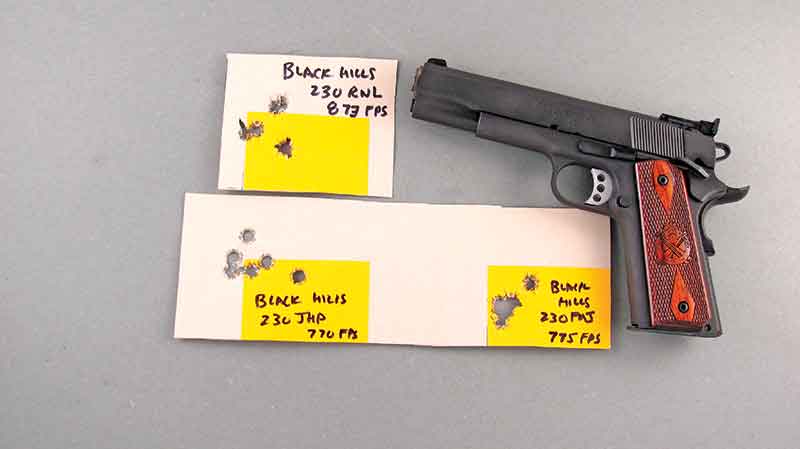
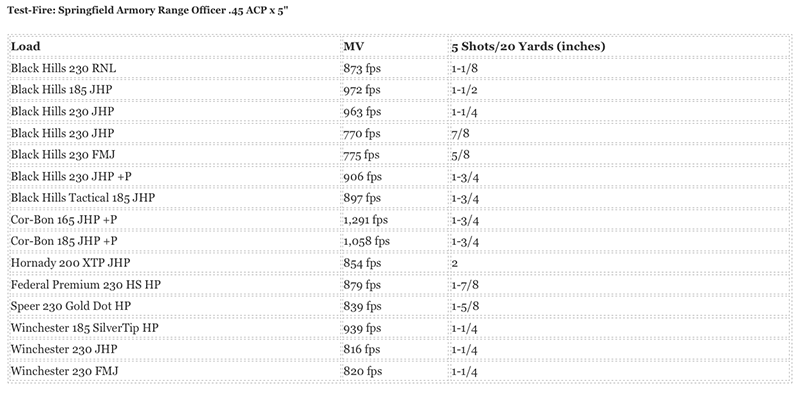
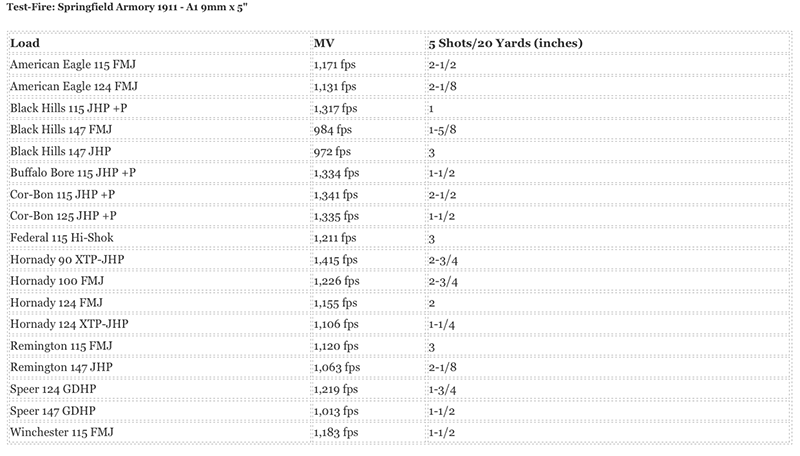
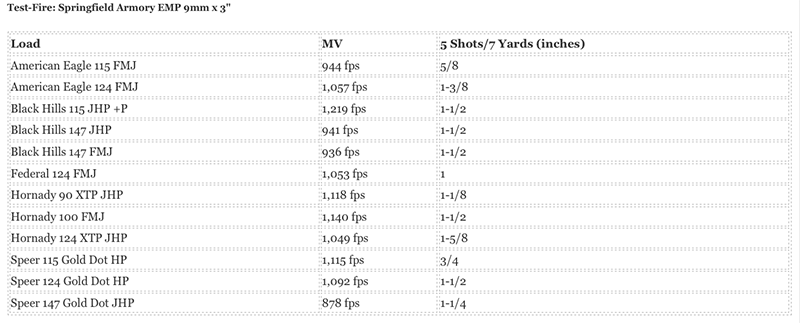
Editor’s Note: This article was written by John Taffin and shared with us by American Handgunner.
Join the Discussion
Featured in this article
Continue Reading
Did you enjoy this article?

 90
90




